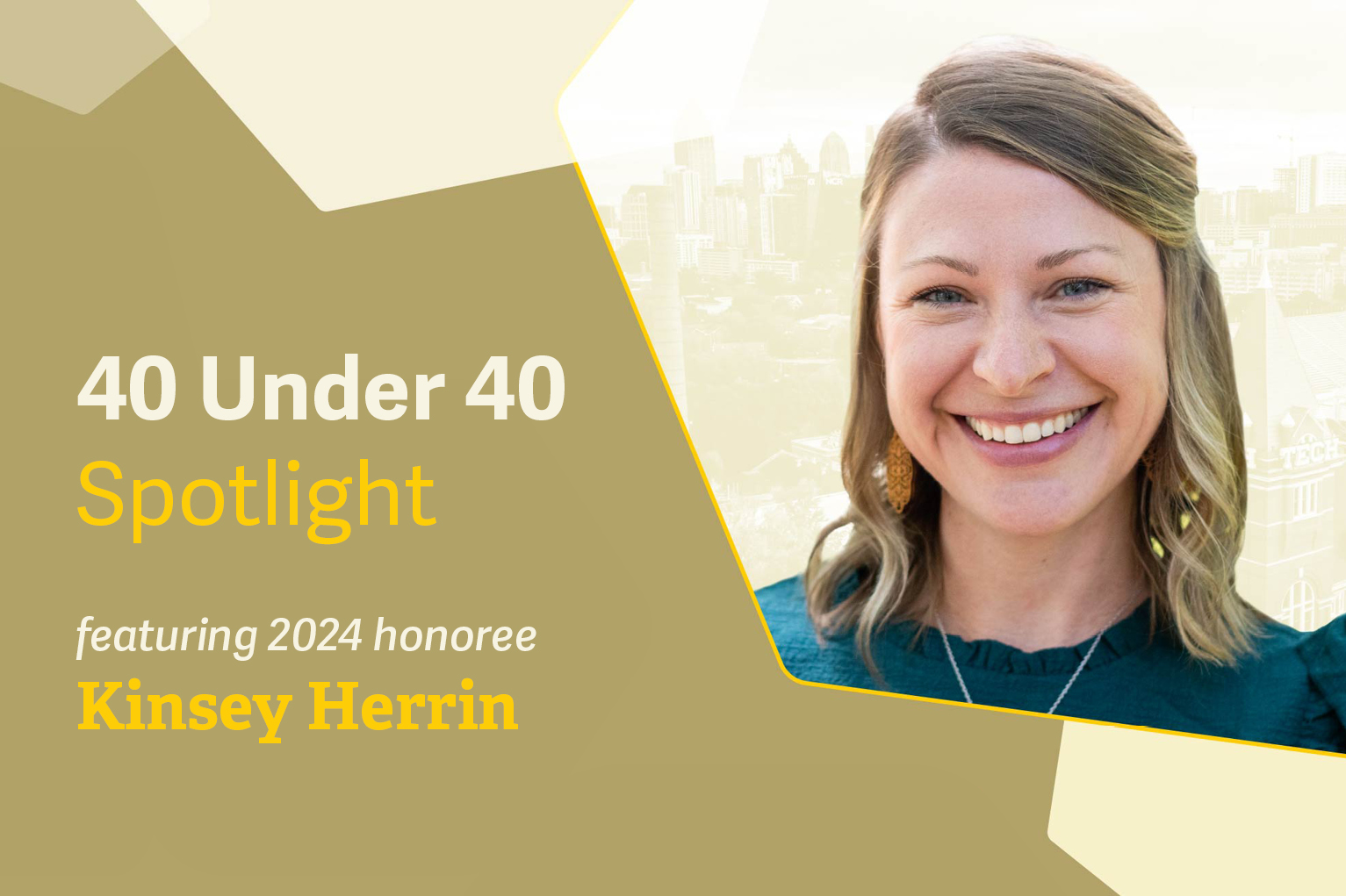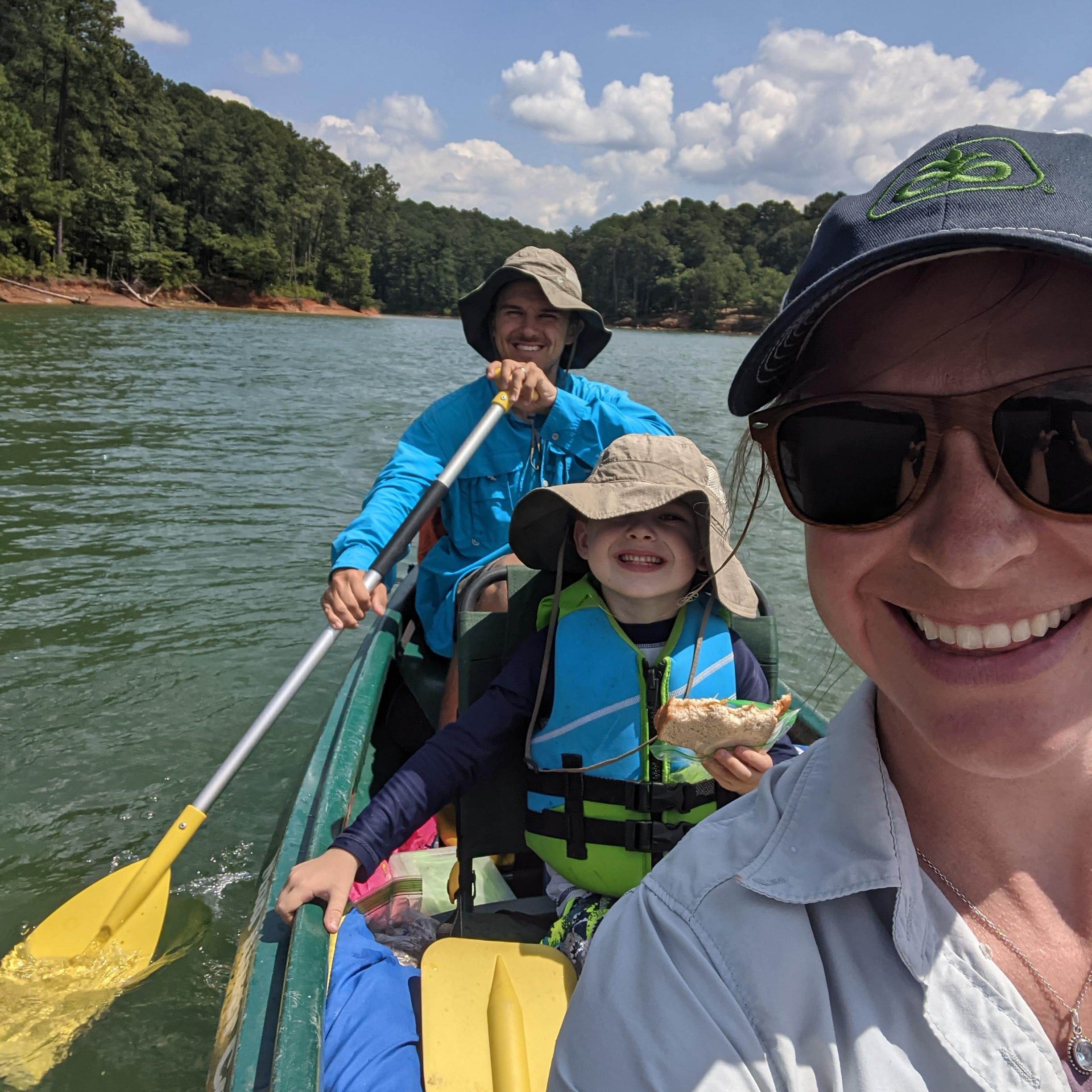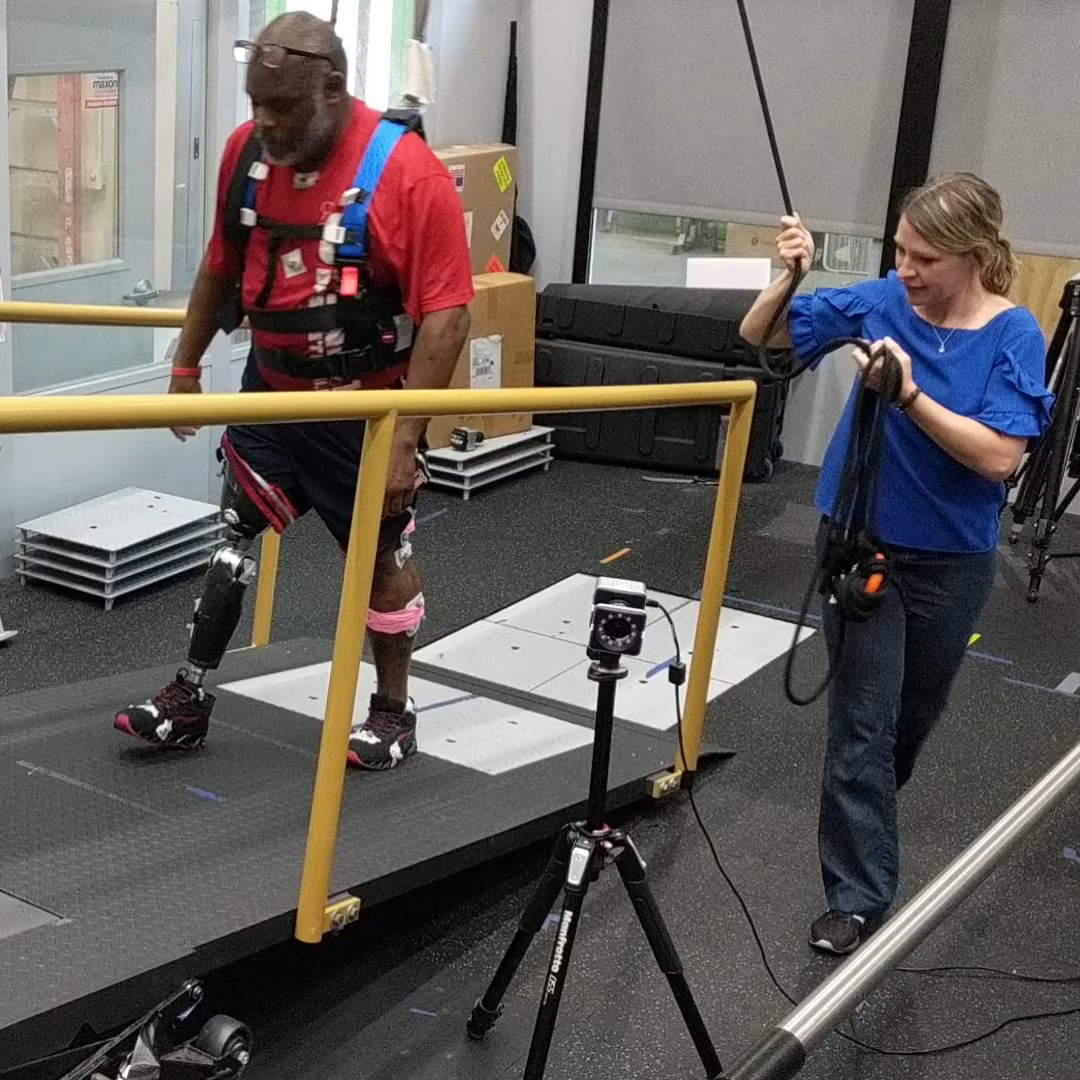
40 Under 40 Spotlight: Kinsey Herrin
Get to know one of the Woodruff School's 2024 Class of 40 Under 40 honorees
October 22, 2024
By Courtney D. Sykes
Kinsey Herrin, M.S. PO 2010, is a senior research scientist in the George W. Woodruff School of Mechanical Engineering and the director of the Human Interface Design Development and Engineering Lab. Her research focuses on advancing state-of-the-art assistive and rehabilitation technologies to improve mobility and quality of life for individuals with disabilities. With a clinical background in orthotics and prosthetics, Herrin combines her expertise with innovative engineering solutions to address mobility impairments. She completed her orthotics residency at Children’s Healthcare of Atlanta and her prosthetics residency at the University of Michigan. She is also a Fellow of the American Academy of Orthotists and Prosthetists.
Learn about Herrin’s motivations, challenges, and career advice in this insightful Q&A.
What has been the most challenging aspect of your career so far, and how did you overcome it?
After my prosthetics residency, my husband and I moved to Miami, Florida and I joined a private practice there. That first year of my time in clinical practice was tough — many of my patients were primarily Spanish-speaking and I wasn’t. So much of being a successful clinician lies in being a strong communicator — being able to understand what a person needs and turn that into a meaningful intervention that will solve their problem. I had to rely heavily on our office staff for translation in that first year. I felt really disconnected from the people I was trying to help. After that first year of immersion, I learned more Spanish and became much more proficient in communicating with my patients independently. My time in Miami was incredibly rewarding — patients came from all over the world with a diverse range of presentations. Looking back on that experience, I’m grateful for that first humbling year of just trying to talk with my patients.
Can you share a specific project or accomplishment that you are particularly proud of?
When I was practicing in Florida, one of my favorite patients had congenital limb absence just below the elbow. Her residual arm below the elbow was very tiny — only about an inch long and just a couple inches in circumference! She was a long-time user of prosthetic devices and came into clinic with great ideas about what she needed and wanted in her next prosthetic arm. She was studying to be a physician’s assistant (PA) and realized pretty quickly into her schooling that the prostheses she had used in the past wouldn’t function to allow her to do several tasks she needed to accomplish in order to be successful as a PA. One key thing for her was being able to bend the prosthesis at the elbow so she could raise a scope to her eye in her prosthetic hand and open her patient’s eye with her other hand. Her past devices hadn’t allowed for elbow flexion at all because her residual limb was so tiny and incredibly challenging to fit.
We worked consistently back and forth for about six months together troubleshooting socket designs, elbow joints and suspensions to come up with a prosthesis that allowed her to bend at the elbow and didn’t need a harness for suspension. We scrapped things and started over from scratch several times. I remember one visit very specifically because I had all the batteries, wrist, hand and electrodes mounted into the diagnostic, unfinished device for her to try again after several recent failures. She was able to operate it so seamlessly! We were both jumping up and down and hugging each other — we had done it together! After that visit, we finished the arm completely and a couple days later my phone buzzed around 8 p.m. It was a video from her of her cutting a steak — her husband had taken her out for dinner, and she was able to cut meat for the first time in her life by herself. I was so happy that night, and it made all that time going back and forth trying to get the prosthesis just right just for her completely worth it.
How has your education at Georgia Tech influenced your career path?
Alongside the strong foundation of clinical knowledge I received at Tech which prepared me well for clinical practice with a diverse patient population, Georgia Tech is where I first began doing clinical human subjects research as a masters student in Professor Young-Hui Chang’s lab with individuals who had below the knee amputation. This experience prepared me well for conducting research in clinical practice, eventually leading me back to my current role as a research scientist at Georgia Tech where my work is heavily focused on improving quality of life for people with physical disabilities by creating and testing new and existing wearable assistive and rehab devices. Going full circle, when I returned to Tech in 2018, Professor Chang gave me my first opportunity to serve in a leadership role in a major study that we published just this year. I am so grateful to him and the other mentors and colleagues who have supported and believed in me.
What is the best career advice you’ve ever received?
In the last year, I read Sheryl Sandberg’s book, "Lean In: Women, Work and the Will to Lead." She talks about looking at your career as a jungle gym rather than a ladder. I really appreciated this perspective on a career and can relate to it on a very personal level given my own career trajectory with moving from clinical practice to clinical education and then on to clinical research. Also, I love the idea of describing your career as a jungle gym because it implies that your career should be an enjoyable and dynamic environment to navigate.
Favorite Tech Memory
The slide at the Georgia Tech pool was one of my favorite things to do with friends after triathlon training at the gym!


